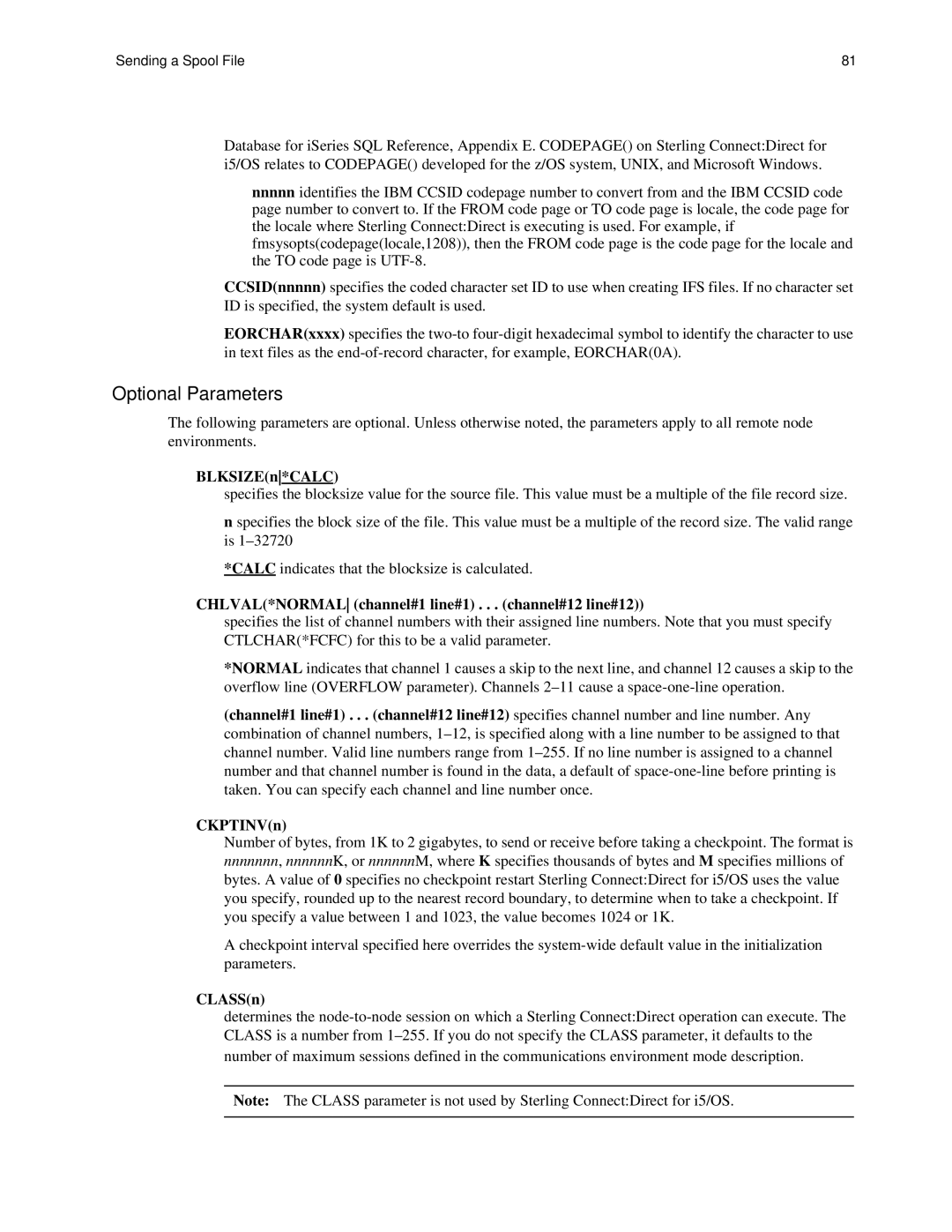Sending a Spool File | 81 |
Database for iSeries SQL Reference, Appendix E. CODEPAGE() on Sterling Connect:Direct for i5/OS relates to CODEPAGE() developed for the z/OS system, UNIX, and Microsoft Windows.
nnnnnidentifies the IBM CCSID codepage number to convert from and the IBM CCSID code page number to convert to. If the FROM code page or TO code page is locale, the code page for the locale where Sterling Connect:Direct is executing is used. For example, if fmsysopts(codepage(locale,1208)), then the FROM code page is the code page for the locale and the TO code page is
CCSID(nnnnn) specifies the coded character set ID to use when creating IFS files. If no character set ID is specified, the system default is used.
EORCHAR(xxxx) specifies the
Optional Parameters
The following parameters are optional. Unless otherwise noted, the parameters apply to all remote node environments.
BLKSIZE(n*CALC)
specifies the blocksize value for the source file. This value must be a multiple of the file record size.
n specifies the block size of the file. This value must be a multiple of the record size. The valid range is
*CALC indicates that the blocksize is calculated.
CHLVAL(*NORMAL (channel#1 line#1) . . . (channel#12 line#12))
specifies the list of channel numbers with their assigned line numbers. Note that you must specify CTLCHAR(*FCFC) for this to be a valid parameter.
*NORMAL indicates that channel 1 causes a skip to the next line, and channel 12 causes a skip to the overflow line (OVERFLOW parameter). Channels
(channel#1 line#1) . . . (channel#12 line#12) specifies channel number and line number. Any combination of channel numbers,
CKPTINV(n)
Number of bytes, from 1K to 2 gigabytes, to send or receive before taking a checkpoint. The format is nnnnnnn, nnnnnnK, or nnnnnnM, where K specifies thousands of bytes and M specifies millions of bytes. A value of 0 specifies no checkpoint restart Sterling Connect:Direct for i5/OS uses the value you specify, rounded up to the nearest record boundary, to determine when to take a checkpoint. If you specify a value between 1 and 1023, the value becomes 1024 or 1K.
A checkpoint interval specified here overrides the
CLASS(n)
determines the
Note: The CLASS parameter is not used by Sterling Connect:Direct for i5/OS.
